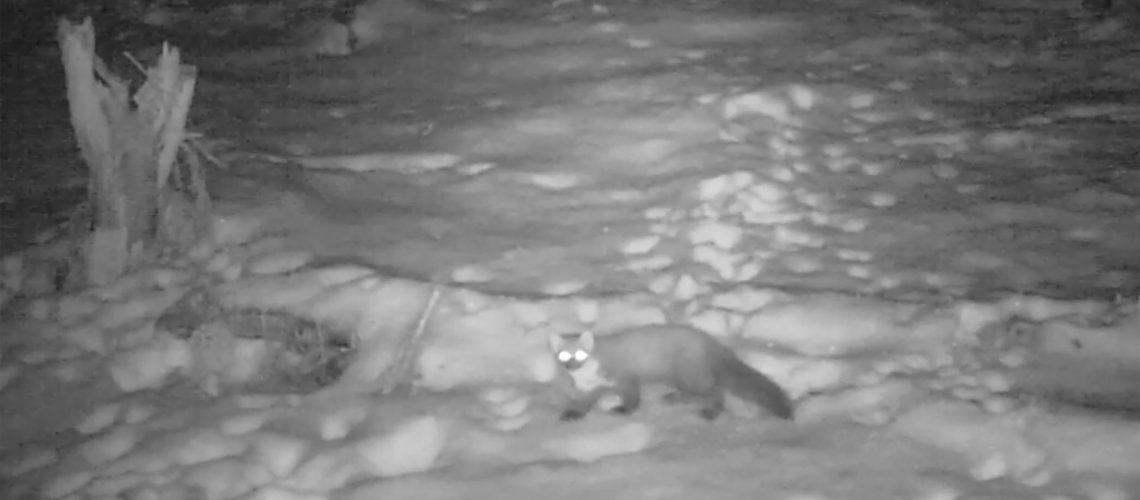
The Back from the Brink Pine Marten Project is the first time we have volunteered with The Vincent Wildlife Trust (which we thoroughly enjoy). We were introduced to the many aspects of this species and project when we saw it advertised in the local press and social media. We knew Kevin O’Hara (VWT’s Back from the Brink Pine Marten Project Officer) from his previous mammal work in the region and thought this would be a good opportunity to learn more from him and the project. Firstly, we met up in Kielder Forest doing transects of forest trails looking for signs of pine martens (their scats and footprints), then we were give some remote cameras we learned how to use and deploy, with a range of bait and lures in appropriate places. The training and encouragement we received from Kevin and The Vincent Wildlife Trust was excellent, and practical, fun and informative.
We were shown what to look for and the habitat required by the pine martens, which augmented our existing knowledge gained from nature watching. Kevin made sure we could read maps and understood all of the protocols and H&S requirements of the forest, with anyone unsure paired with people who could help and were more experienced. All questions were answered in a clear concise and easy to understand manner with Kevin’s very own brand of humour and vast experience.
We both enjoy wildlife-related volunteering, and do things on a scientific basis for the wildlife’s benefit, as we realise the importance of accurate data. We also undertake extensive volunteering with Northumberland Bat Group, including radio tracking (on foot and in a car) of Nathusius’ bats over wide tracts of Northumberland (also being quizzed by the police whilst doing this in the early hours); helping with hibernation studies; bat box checking; bat care; and the NBMP (National Bat Monitoring Programme) for BCT (Bat Conservation Trust), the NHSN (Natural History Society of Northumbria) and the National Trust. We also trap moths and record them as part of the Garden Moth Scheme.
In the field, with the cameras, we listened to Kevin’s advice but used our local knowledge to position the cameras in the best areas. Each camera took about an hour to deploy to get everything just right, after extensive map and aerial photography reconnaissance work at home. The cameras were placed where there was enough natural food such as voles and squirrels, with good access to neighbouring habitats. We learned a lot from Kevin and from the VWT’s work in other areas in Wales and Scotland. Placing the cameras near or along existing animal tracks and areas less frequented by humans was also important as that means hopefully the cameras were there when you went back!
We were snowed in for a while and couldn’t wait for a break in the weather to find the cameras again. Once home, the SD cards were downloaded. It is a long process sifting through hundreds of 10 second videos sometimes of absolutely nothing, then a fox, a badger or a deer, and then imagine our joy when checking one of the first cameras we deployed; we had video of a pine marten, not once but on two separate occasions! Just rewards for all those countless fox and mice videos. Seeing a pine marten on them was ‘better than winning the lottery,’ as getting the first pine marten on video in Northumberland can only be done once! We feel so privileged to be part of the Pine Marten project and be part of the history being made; it is great!
Neil and Amanda Tomas, Back from the Brink volunteers
To find out more about the Back from the Brink Pine Marten project, click here.